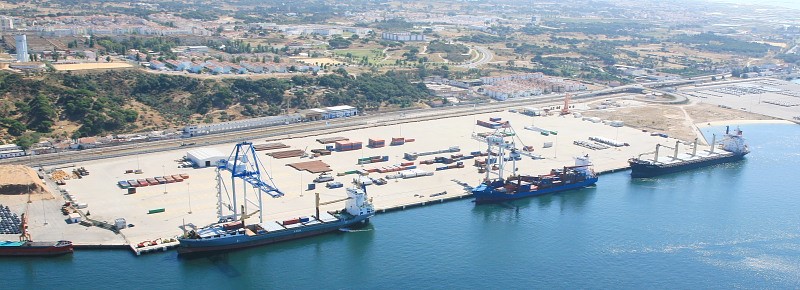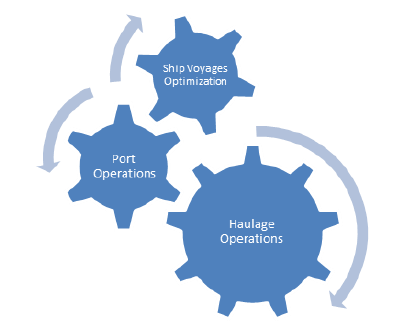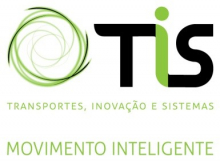
Objectives of the service

The long term objective of the activity is to provide sustainable services based on the use of satellite assets to end users involved in intermodal freight transport through European ports in order to optimize the intermodal transport chain.
The existing high level service concept is of a system integrating existing systems and technologies with space-based assets to provide timely notification of relevant events in the intermodal transport chain, optimization of operations through the use of new technological solutions and through information exchange between the involved actors, and prediction of circumstances (weather and oceanographic forecasts for instance) to support decision and planning processes. These services need to be based on decision and operational support systems, fed with data collected at different scales (e.g. global, regional and local).
The objectives of the EUROPORT demonstration project are:
- To demonstrate to the involved communities the applicability of the concepts and practices defined;
- To disseminate widely good practices and the use of satellite assets and state-of-the-art technologies at national and regional levels;
- To show-case the replicability of the use of the EUROPORT integrated solution in several regions of Europe;
- To prove the economic viability of the EUROPORT integrated solution.
Users and their needs
In summary, the following issues were identified as key issues for the optimization of intermodal operations in ports (considering that port infrastructure remains the same):
Optimise the accuracy of the forecast of arrival (ETA) and departures (ETD) of ships in ports;
Optimise the accuracy of the forecast of arrival and departures times of trucks to/from terminal and port gates;
Improve port gate-in and gate-out operations in order to reduce time consumed by these operations;
Improve the efficiency of pick-up and delivery operations in the yard.
Shipping lines, haulage companies, Ports as main users of EUROPORT service will obtain benefits from it:
- Reducing costs of operation
- Improvement of reliability
- Better confidence on their services for their customers
- Higher net benefits
 Portugal and Poland
Portugal and Poland
Service/ system concept
The definition of EUROPORT integrated solution comprises the following three groups of services:
- Service 1 – Haulage Operations: aggregates functionalities which will improve the haulage process by optimizing operations directly affecting or related with port operations. Includes issues like:
Orchestration of “haulage operations”
Real-time monitoring of trucks/trains
Estimation (for trucks/trains) of ETA/ETD at/from ports.
- Service 2 – Ship Voyages Optimization: provides functionalities which will improve the calculation of ship ETA and ETD to/from ports. Includes issues like:
Ship Positioning Tracking
Optimal Ship Route Calculation
Estimation (for ships) of ETA/ETD at/from ports;
- Service 3 – Port Operations: provide functionalities that support the planning and optimization of intermodal transport operations in ports and terminals, such as:
Transport-related Operations
Access to relevant documents
Transport order management;
Gate Operations
Yard Operations
Loading optimization

EUROPORT services
Space Added Value
Current Status
The EUROPORT project has been completed. During the demonstration phase, the EUROPORT system also evolved with the PCS installed in the ports and user feedback, being adapted to the new versions of the PCS. Also during the trials the users were heard and the system UI/UX tweaked to have an improved system at the end of the trial. After having collected over 13 months of data at the Setubal port in Portugal, the project team has performed a trials analysis. Based on the results achieved and taking into consideration the values achieved without EUROPORT, it can be seen that the specific added values of the tool is not sufficient in terms of its cost and respective benefit, meaning that after 5 years running EUROPORT the savings that it will bring to the company are estimated to be 486.800€. This amount when compared with the incomes of the port without EUROPORT is quite reduced.
The calculated indicator, net present value (NPV) is the difference between the present value of cash inflows and the present value of cash outflows over a period of time (5 years). NPV is used in capital budgeting and investment planning to analyse the profitability of a projected investment or project.
A positive net present value indicates that the projected earnings generated by a project or investment exceeds the anticipated costs. It is assumed that an investment with a positive NPV will be profitable, and an investment with a negative NPV will result in a net loss. This concept is the basis for the Net Present Value Rule, which dictates that only investments with positive NPV values should be considered.
Based on this the EUROPORT for the present trial is not an interesting investment both due to the Setubal port size as well as the containers movements which are quite low. If the trial could be scaled up, more interesting results could appear but as it is and considering the directives issued by the commission it is not the most interesting and secured way to proceed.
Prime Contractor(s)
Subcontractor(s)





